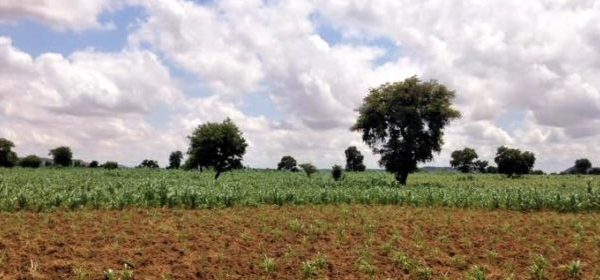This post was originally published on the CTA Blog. Find the original post here.
by Deborah Rubin – Co-director, Cultural Practice, LLC and Olu Ajayi – Senior Programme Coordinator Agriculture & Climate Change
Agricultural production will need to increase by at least 50% over the next 30 years to meet the needs of rising populations and changing dietary preferences. This increase is caused by population growth, rising incomes and urbanisation. The latter two factors will lead to greater demand for protein rich foods, fruits and vegetables. This is already an enormous challenge, but is further complicated by anticipated climatic uncertainties, as farmers face increasing risks of drought, flood, and other stresses.
Climate-smart agriculture (CSA) offers approaches that may ease these risks. Over the past two decades, scientists, policy-makers and development actors have focused on the technical aspects of CSA, and sought to find ways to capture the ‘triple-win’ of productivity, adaption and reduction in emissions, and to enable adoption of these practices.
But much less attention has been given to the social dimension of adoption, and especially the issues facing women farmers and entrepreneurs. Some CSA practices can potentially reduce women’s time burdens, for example by planting woodlots to give them easier access to fuelwood. The labour implications of some CSA practices – together with tenure security, access to credit, and levels and types of knowledge – are among critical factors that influence women’s decisions to adopt climate-smart agriculture. Shifting climate patterns may also hold potential for new enterprises, as changing temperatures and rainfall patterns make it easier or harder to grow specific crops. This opens up new opportunities for women agripreneurs to develop business opportunities that address the three pillars of CSA: productivity, adaptation and mitigation.
A helpful way to frame an answer to the question of how to ‘make CSA work for women farmers and agripreneurs’ is to consider three different modes of women’s engagement in the scaling up of CSA, drawing on the different agricultural intervention strategies of Reach, Benefit, and Empower (RBE) developed by the International Food Policy Research Institute. Interventions can be classified according to the extent that they are able to increase the participation of women (REACH), strengthen the returns they get from their efforts (BENEFIT), and/or strengthen women’s ability to make strategic life choices, and put those choices into action (EMPOWER). Analysing projects in this way supports a more intentional approach to the design of development programmes to achieve gender equality and women’s empowerment.
When applied to CSA, efforts to reach women could include:
- Disseminating weather and market information through the communication channels most accessible to women, such as radio, television and mobile phone, as well as face-to-face meetings with extension agents trained to work with women. For example, CTA is supporting World Vision to implement a weather alert programme in Mali that sends SMS messages to a literate group leader, who in turn communicates messages to group members.
- Introducing women as well as men to new varieties of stress tolerant seeds using seed fairs (e.g. drought tolerant maize, improved groundnut, or stress tolerant rice) is a feature of CTA’s UPCSA project to scale up the adoption of CSA practices in Mali. Other projects are ensuring that packages are sold in sizes and at prices that women can afford. Branding can help to make the stress tolerant characteristics recognisable.
- Offering targeted training to women to spread knowledge of CSA techniques and accelerate their uptake. This is a feature of CTA’s CLI-MARK project, which is working with women’s groups engaged in livestock keeping, e.g. to introduce new techniques to improve rangeland management.
Women will benefit from food and nutrition security and higher income or upgraded performance in agricultural value chains when they:
- Increase entry into new business areas that support CSA related activities, such as starting agro-input dealerships that sell stress tolerant seeds, or equipment that reduces labour intensive adaptation techniques.
- Start agribusinesses that take advantage of shifting climatic zones to grow crops in new locations.
- Participate in nutrition sensitive value chains for animal source foods (e.g. meat, eggs and dairy), which offer nutritional benefits for their households, while utilising efficient production processes that mitigate negative environmental consequences.
- Purchase crop or livestock insurance that protects investments in the face of climate/weather shocks. The International Livestock Research Institute’s Index-Based Livestock Insurance (IBLI) programme offers products to protect livestock owners from drought-related asset losses. It uses satellite data of range conditions and statistical modeling to monitor availability of forage over a given period of time. The insurance kicks in when forage levels fall below a critical level.
Women will empower themselves with the help of intentionally designed projects to:
- Make strategic life choices that promote sustainability in their production, processing and agribusiness endeavours.
- Leverage income and benefits from their participation in CSA as a pathway to achieve a stronger voice in decision-making, at home and in the wider community.
As women become a stronger focus for advocates of CSA, it is important to look beyond production and to develop inclusive business opportunities that build on current knowledge of the potential consequences of climate variability. Making CSA work for women requires mutually reinforcing approaches: (I) a deliberate focus on the implications for women in the design of CSA programmes; (II) considering the ergonomics for women in the technological development of CSA practices; (III) raising the profile of women at all levels in forums where decisions regarding CSA are made; and (IV) providing information on business opportunities to help women make informed decisions on investment opportunities related to CSA.
This article was created through a CTA-led process to document and share actionable knowledge on ‘what works’ for ACP agriculture. It capitalises on the insights, lessons and experiences of practitioners to inform and guide the implementation of agriculture for development projects.
Photo Credit: Cait Nordehn

